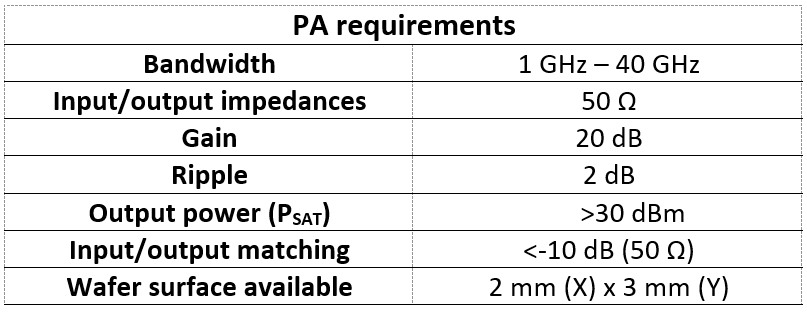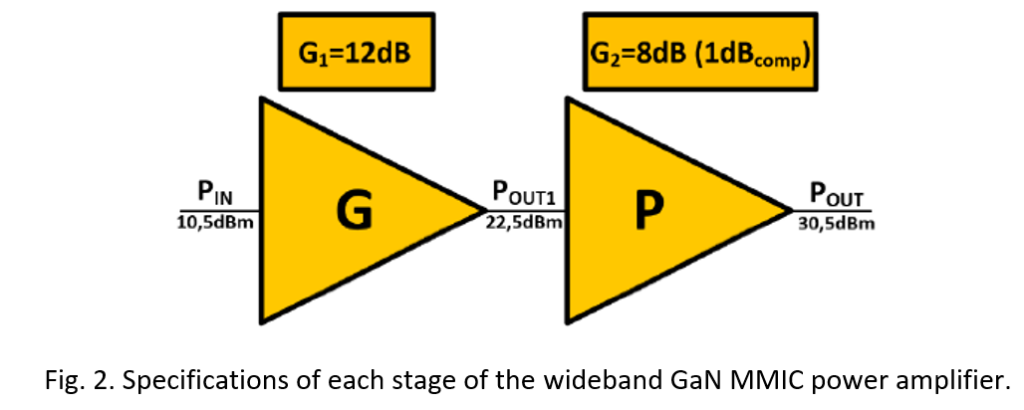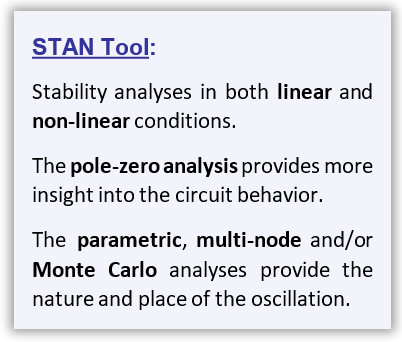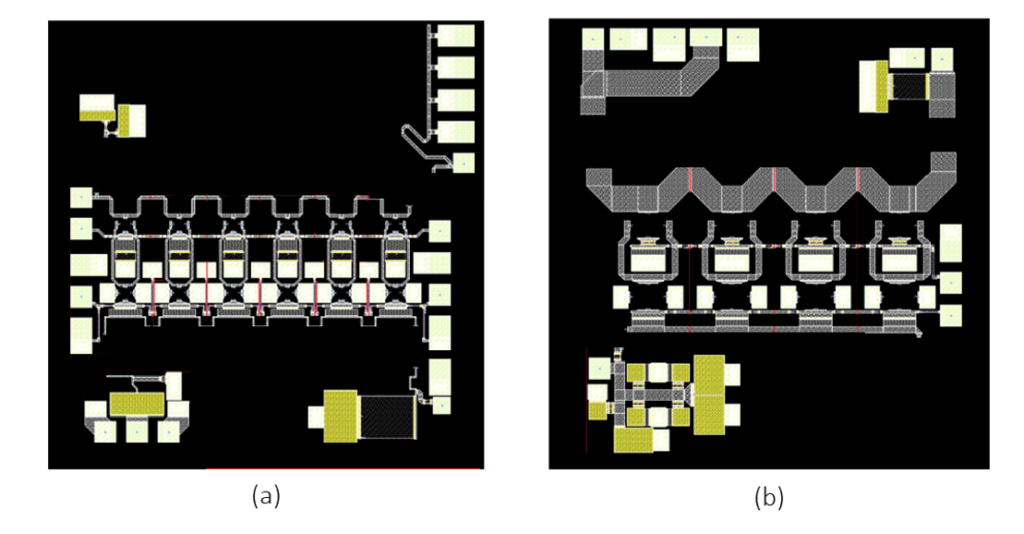Efficient Detection of Instabilities in Wideband GaN MMIC Power Amplifiers using STAN tool
Context
The fast evolution of wireless communication technologies requiring higher data transmission rates has forced a change on how wireless communications systems are designed. Thus, nowadays, systems are expected to work with more complex modulated signals and wider bandwidths.
Working towards the 5G and beyond, and considering an already saturated spectrum around the few-GHz frequencies, systems able to work at higher frequencies are required. Thus, creating circuits expected to operate at higher frequencies is a real challenge for designers. In the case of power amplifiers, more complex structures and technologies have to be used in the design flow to attain the specifications in terms of efficiency and linearity.
Monolithic Microwave Integrated Circuits (MMICs) [ 1 ] are one of the solutions to achieve the challenging specifications of new applications allowing smaller sizes and higher frequencies. Moreover, the Gallium Nitride (GaN) technology provides high-frequency and high-power performances at a lower cost in a still maturing but already established process.
When designing MMICs, stability analysis becomes more relevant: circuits cannot be adjusted after fabrication. Therefore, a thorough and reliable stability analysis is necessary to successfully achieve circuit design specifications.
In this document, the efficient detection of instabilities in wideband GaN MMIC Power Amplifiers will be illustrated through the success story presented in the PhD dissertation of Dr. Iban Barrutia Inza, University of Cantabria, Spain [ 2 ]. Thanks to the stability analysis with STAN Tool under linear and nonlinear conditions, and its ρ factor from the SISO method [ 3 ], instabilities can be easily detected and stabilization achieved when other methods fail to provide accurate solutions.
Challenge to solve
Designing PAs able to work from a few GHz up to mmWave frequencies and provide high values of output power can be very demanding: complex structures and amplifying cells must be used to reach the specifications.

The wideband GaN MMIC PA presented in the PhD dissertation [2] had to fulfill the following requirements (Table 1) using the technology D01GH from OMMIC [ 4 ]:

Therefore, to attain >30 dBm of saturated output power in 39 GHz carrier bandwidth, a distributed configuration [ 5 ] has been selected and the design will contain two stages: a gain stage with a power stage connected at its output (Fig. 1) [ 6 ].

Because of the high gain and output power and the working frequencies expected, the active devices will form the amplifying cell in cascode configuration [ 7 ]. The power stage will have 4 cascode amplifiers that will present 8 dB of gain and 31 dBm of output power. The gain stage will have 6 cascode amplifiers presenting a gain of 12 dB and 23 dBm of output power (Fig. 2)

Different tools for the stability analysis of RF and microwave circuits are available in commercial simulators, with the Rollett factor [ 8 ], K, and the µ factor being the most used. However, these methods are only valid in linear conditions for a two-port network, intrinsically stable, that exhibits negative resistance at its ports for any value of passive source or load impedances. Moreover, they are not appropriate for a reliable stability analysis of multistage PAs with complex structures where internal stability is more difficult to ensure.
To cope with stability analysis of complex multistage power amplifiers, STAN Tool proposes a more powerful approach. Thanks to its unique pole-zero analysis in linear and nonlinear conditions, STAN Tool provides more insight into the circuit dynamics giving information about the nature of the oscillation and where in the circuit it is happening. The parametric and multi-node analysis available in STAN Tool enable efficient detection of instabilities in wideband MMIC power amplifiers.
Stability Analysis
First, the stability analysis of the wideband GaN MMIC power amplifier [ 6 ] was carried out at each stage separately (Fig. 3). For the small-signal stability analysis, both the Rollett factor and the STAN Tool analysis have been used and results will be compared.

Stability analysis of the power stage
Small-signal stability analysis
The small-signal stability analysis of the power stage is performed in the whole 0.01 GHz – 60 GHz operation bandwidth. The amplifying cell in cascode configuration is connected as shown in Fig. 4.
To read the success story in its entirety, download the complete document.

